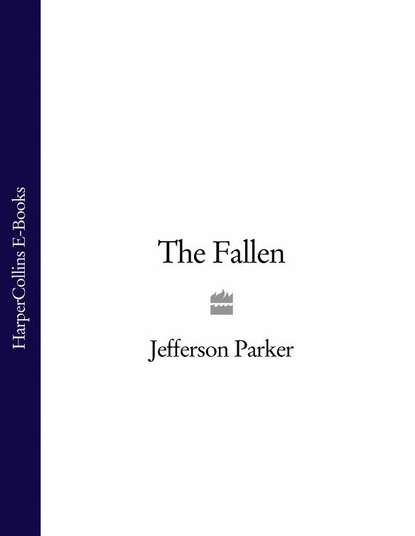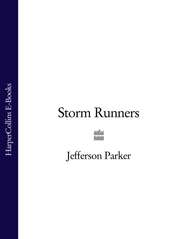По всем вопросам обращайтесь на: info@litportal.ru
(©) 2003-2024.
✖
The Fallen
Автор
Год написания книги
2018
Настройки чтения
Размер шрифта
Высота строк
Поля
‘Did you issue him a laptop computer for work?’ I asked.
‘Of course,’ said Van Flyke. ‘We all got new ones about two months ago.’
‘We haven’t found it,’ said McKenzie. ‘It wasn’t in the Explorer or his apartment.’
Van Flyke stared at her. ‘It’s not here either. Maybe he was robbed after all.’
McKenzie scribbled.
‘His last two meetings were with HH at a place called Hidden Threat Assessment in La Jolla and with CAM at the Imperial Beach Pier,’ I said.
‘HTA is a Spook Valley company,’ said Van Flyke. ‘HH is Hollis Harris, who started it. CAM at the Imperial Beach Pier? I have no idea about who that might be.’
‘May we see his workplace?’ I asked.
‘Sure.’
Van Flyke wrote his cell number on the back of a business card and handed it to me. Then he led us out of his office and into what once must have been a bedroom for the Italian bakers. There was a partition through the middle of it. A desk and an empty chair on each side. Garrett’s desk had a framed black-and-white photograph of Samantha and a coffee cup with a picture of a rainbow trout on it. On the wall was a pictorial calendar of San Diego. This month’s featured site was the pretty Casa del Prado building at Balboa Park, which stands just a few hundred yards from where they’d found Garrett Asplundh’s body.
I shook hands with Van Flyke and thanked him for his time. McKenzie did neither.
She went down the stairs ahead of me. Arliss Buntz was standing now, as if she’d been waiting for us to come down. Her headset was still on and her sweater still pulled up for warmth. Her blue-brown eyes locked on to mine.
‘He was a man headed for trouble,’ she said.
‘How do you know that?’ I asked.
‘Look at his high ideals!’
She sat and pivoted her chair, giving us her back as she bent to open a drawer.
‘What do you mean?’ I asked her.
‘He was too good for the people around him,’ she muttered without turning.
McKenzie drove while I called Hollis Harris and CAM. Hollis had heard about Garrett’s death and agreed to give us one hour of his time. CAM’s computer-generated message told me once again to leave a name, number, and short message, but again I didn’t. I wanted CAM live. Lots of people won’t return calls to Homicide detectives, but very few will hang up on one.
I called Gina to make sure she was up and doing okay. She answered halfway through the greeting. She apologized for last night. Said she’d had one too many. Rachel got fully toasted. I told her not to worry about anything and maybe we could go out to dinner that night and I loved her.
McKenzie kissed the air as she gunned the car toward the freeway.
Spook Valley is a nickname given to a cluster of La Jolla companies specializing in nuclear-weapons technology, strategic defense, border control, industrial security, and military surveillance. Many of these are secret, or ‘black,’ programs, funded directly by the CIA or the Pentagon or the Department of Homeland Security. Some of the companies started back in the early 1990s, but a lot of them have sprung up since 2001. I thought of John Van Flyke’s figure of $7 billion of R&D money from Homeland Security alone and what share of it came to San Diego.
Spook Valley isn’t spooky at all. It’s everything Southern California is supposed to look like – swaying palms and twisted coastal pines and jaggedly beautiful beaches under blue sky. The green hills tumble down to the Pacific like spilled loads of emeralds. The architecture in La Jolla is a vivid mix of Mediterranean, Spanish Colonial, Spanish Revival, Craftsman, Prairie, California Rancho, postmodern, contemporary – you name it. Even the ‘Tuscan’ monstrosities have caught on here, though they look overweight, hunkered on their tiny but expensive lots. But the Spook Valley companies cling quietly to the top-secret shadows while the rest of La Jolla basks in the light, and everyone comes together at the fancy restaurants on the bluffs to watch the sun go down.
We drove past the Hidden Threat Assessment building before spotting the number, so McKenzie spun a U-turn and bounced my mushy Chevrolet take-home into the parking lot.
‘Look at all that mirrored glass,’ said McKenzie. ‘They don’t even put their name on the building, just HTA. And check over there – the Enzo. That’s six-hundred fifty horses you’re looking at. Sick. Oh, man, now that’s a car.’
It was a red Ferrari and the license plate read H-THREAT. I wondered if it had been parked briefly alongside Highway 163 the night Garrett was shot. I wondered how many red Ferraris there are in San Diego.
Hollis Harris met us at the security desk in the gleaming lobby. He was about my age. Thirty tops. He was small, slender, almost bald, and dressed in black – shoes, trousers, belt, golf shirt, watch. His face was trim, and his gaze was open and opinionless.
We stopped at a coffee-and-sandwich cart. Harris got a triple espresso, black.
‘I’m trying to cut back,’ he said.
‘How many a day?’ asked McKenzie.
Hollis ducked his head and frowned. ‘Three? Okay, four, but four max.’
‘I’d be bouncing off the walls,’ she said.
‘Maybe that’s why I only sleep five hours a night.’
‘How do you feel in the mornings?’
‘Actually,’ said Harris, ‘great.’
His fourth-story office was large, uncluttered, and bright with late-morning light. The floor was buffed maple, and his curved desk was stainless steel. Most of the fixtures were stainless steel, too. There were windows on two sides and white walls on the other. A huge painting took up most of one wall – it showed the back end of a Ferrari speeding away from you. A collection of photographs of Hollis Harris with various celebrities graced the other.
We sat at a suite of stainless and cream leather furniture in front of one of the big picture windows. Harris clapped his hands softly twice and a sun filter descended from the ceiling. As it lowered I watched the vivid optics of the Soledad Highway and San Clemente Valley soften and retreat.
‘I’d talked to Garrett Asplundh several times over the last two years,’ said Harris. ‘At first he was interested in HTA’s financial relationships with the Department of Homeland Security and the CIA and some of the casinos in Las Vegas and San Diego County. And, of course, with the City of San Diego. So I opened our books to him, everything from contracts to payroll. I didn’t see him for three months.’
‘I take it your accountants had done their jobs,’ said McKenzie, looking from her notepad to Harris.
‘Our books are as clean as this floor,’ said Harris. ‘HTA makes good money and there’s no reason to cheat, lie, or steal. I don’t have the time or interest for that.’
I was reading through Asplundh’s notes on HTA while Harris talked. ‘Garrett said you – HTA – donated a hundred and fifty grand to the Republican Party in 2003, trying to get the governor recalled.’
‘We did,’ said Harris. ‘We also donated a like amount to the Democratic Party, to help them field a good candidate of their own. We’re not a political company here. But we do believe in the state of California. I was born in this state. Lived here all my life. It means something to me.’
I looked into Hollis Harris’s steady eyes. ‘Garrett met you here at five o’clock the day before yesterday – the day he died.’
‘Right,’ said Harris. ‘We talked about developing Hidden Threat Assessment software for the Ethics Authority.’
‘What exactly is “hidden threat assessment”?’ asked McKenzie.
Harris sat forward on the edge of the cream-colored sofa, like he was getting ready to jump up. ‘The heart of it is a software system that lets databases talk to each other in real time. I got the idea back in high school. My dad worked for TRW and he was always complaining that the information was out there but he couldn’t get it in time. The information is out there but I can’t get it in time. So I designed him a program for my computer class and got an A on it. I sold it to TRW for half a million dollars when I was eighteen. That was enough to begin this company. We’ve gone bankrupt twice and bounced back twice. I’ve lived everywhere from ratty downtown hotels to mansions in La Jolla. Mansions are better but ratty hotels save you time on upkeep. Work ruined my marriage but I won’t make the same mistake again. I have a wonderful young son. Last year this company did over forty-five million and we’re on track to beat that this year. By a lot.’
‘How did you write a program like that as a high-schooler?’ asked McKenzie.
Harris shrugged. ‘I don’t actually know. It’s a knack. When I deal with coded information it becomes aural to me. Musical. I hear it, I hear ways that sounds – they’re not sounds actually, they’re megs and gigs and beyond – can be harmonious and advantageously cadenced. As soon as you stack information like that, massive amounts of it can be digitally fitted and synchronized. Then it can flow, literally, at the speed of electricity. It’s not all software. You need some special machines to run an HTA program. I designed them. It’s hard to explain.’
‘Guess so,’ said McKenzie.
I was half tempted to tell Hollis Harris that I could see the shapes and colors of emotions behind spoken words. But only half. It’s not a parlor trick. If news of that got back to headquarters on Broadway it would hurt me sooner or later. My advancement has been greased by my apparently miraculous recovery from the fall, and by my minor and unasked-for celebrity. I may be ‘different’ enough to see shapes and colors when people talk, but I’m not different enough to admit it to anyone but Gina.






